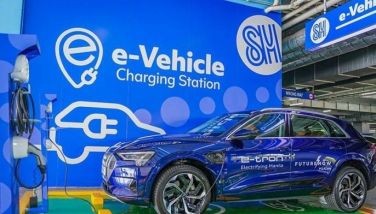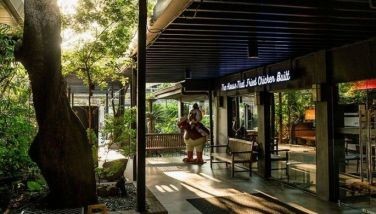The future of Cebu traffic
Like all infrastructures issues, traffic management needs a long term perspective because we have to match road capacity and network to a projected demand for pedestrian and vehicle space for years in the future. The current traffic problem in Metro Cebu is partly due to the failure to anticipate traffic demand, but more so due to the delayed implementation of the road widening or expansion, road additions, and the implementation of the mass transport system. In the immediate horizon, we can see that both the local and national government (through the DPWH), have been widening and concreting some of the roads in Metro Cebu. These have created more traffic due to the lack of coordination by DPWH and the local governments, and the slow implementation of these projects.
In Cebu City, we finally have an agreement with the DPWH, that six months before the start of road and drainage projects, they and the contractors should provide CCTO (formerly CITOM) the project details and schedules. We and the infrastructure committee and the affected local officials will coordinate before these are forwarded to City hall for the work permits. We also agreed that the DPWH projects for the city for the succeeding years' budget should be cleared with the mayor, the Regional Development Council and the CCTO so it will be properly endorsed to DPWH national office.
I have always maintained that "good engineering makes for better and easier enforcement." But given the current state of affairs in the infrastructure aspect, the immediate initiatives and actions that CCTO can do and are already doing, is better enforcement of traffic rules and regulations to remove man-made traffic obstructions and bottlenecks, and improve the traffic flow. A given pathway, be it a pipe or a road will have a maximum capacity, so to increase volume flow, the flow rate have to be increased to raise the total flow capacity. This is what stricter and better traffic enforcement will do. We are hiring and deploying more traffic enforcers, and we will be strict in the no stopping and no parking violations. During peak hours, enforcers will be deployed in major intersections to assist the traffic lights in de-clogging the intersections.
Some of the major intersections will be "flared" and we will have some of the recessed "loading and unloading bays" in the first quarter of next year. These will minimize vehicles, public and private, from stopping just at any section of the road, and discipline them to stop at these designated areas. This is also in anticipation of the Bus Rapid Transit that will be in the road in 2016 and 2017. The private BRT from Talisay to the airport, which will be operated by the SM Group and JAM should be in place by March 2016 or earlier. The second BRT which is owned by the government, from Pardo to Talamban should be running by March 2017. These two mass transport projects will reduce the number of jeepneys and private vehicles in these routes as it is surely more convenient, pleasant and cheaper to ride the BRT. In the third quarter of 2016, we should already have a new traffic signalization for Cebu City to replace our 25 year old traffic lights. We have embedded this in the BRT project as a component of the system. This will still be a coordinated and adapted signalization.
By 2018 and 2019, most of the road infrastructures in Metro Cebu would be in place and hopefully a Metro Cebu Development Council or Mega Cebu council in place, to coordinate traffic infrastructures in Metro Cebu. We in CCTO already have a working agreement with the Mandaue traffic authorities to coordinate our traffic rules and regulations, and an ad hoc arrangement to assist each other. In due time, we will have similar arrangements with Talisay, Lapu-Lapu, Cordova and Consolacion as these will be for the benefit of all, especially because by then the 3rd Bridge to Cordova will already be operational.
We have discussed some ideas for transport systems beyond 2020 and these includes a subway system for the downtown area, one line going north to south, and another east to west, with a central transfer station in the center. The technology is no longer a problem and would probably cost less than an overhead Light Rail Transit, as there are less right-of-way acquisitions.
This will need the right government officials to make this a reality. A less problematic transport system which I recently forwarded to the mayor, is a Cable Car System for the mountain barangays. These systems are already working in a number of Latin American countries with similar topographies as Cebu and is better than the "habal-habal," which are the main transport of our mountain barangays. We are just waiting for the proponent to come up with a public-private partnership proposal on this venture.
There are 1100 new vehicles registered in Cebu City every month which together with vehicles registered in other parts of Cebu, adds 1400 vehicles a month to the Cebu traffic. If we are able to implement all the projects we have envisioned for Cebu City, from now to 2020, traffic in Cebu will not get worse. It will get better in 2017/2018 when both BRTs are in operation, but we will need the subway or LRT after 2020.
- Latest





















